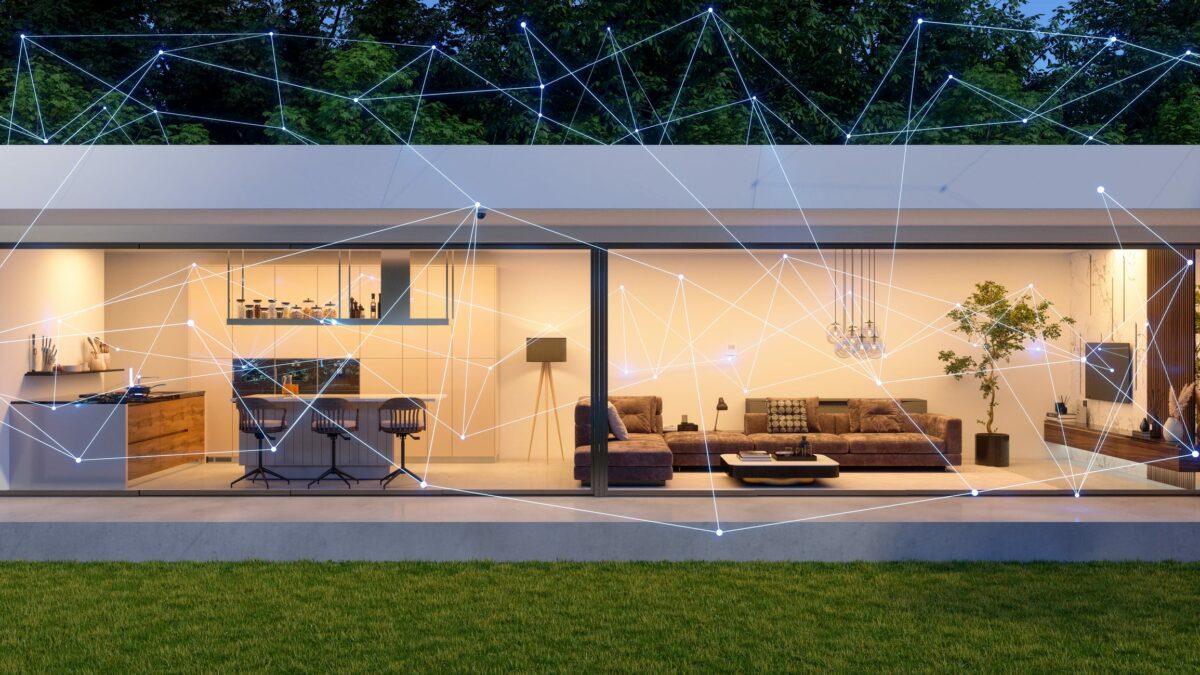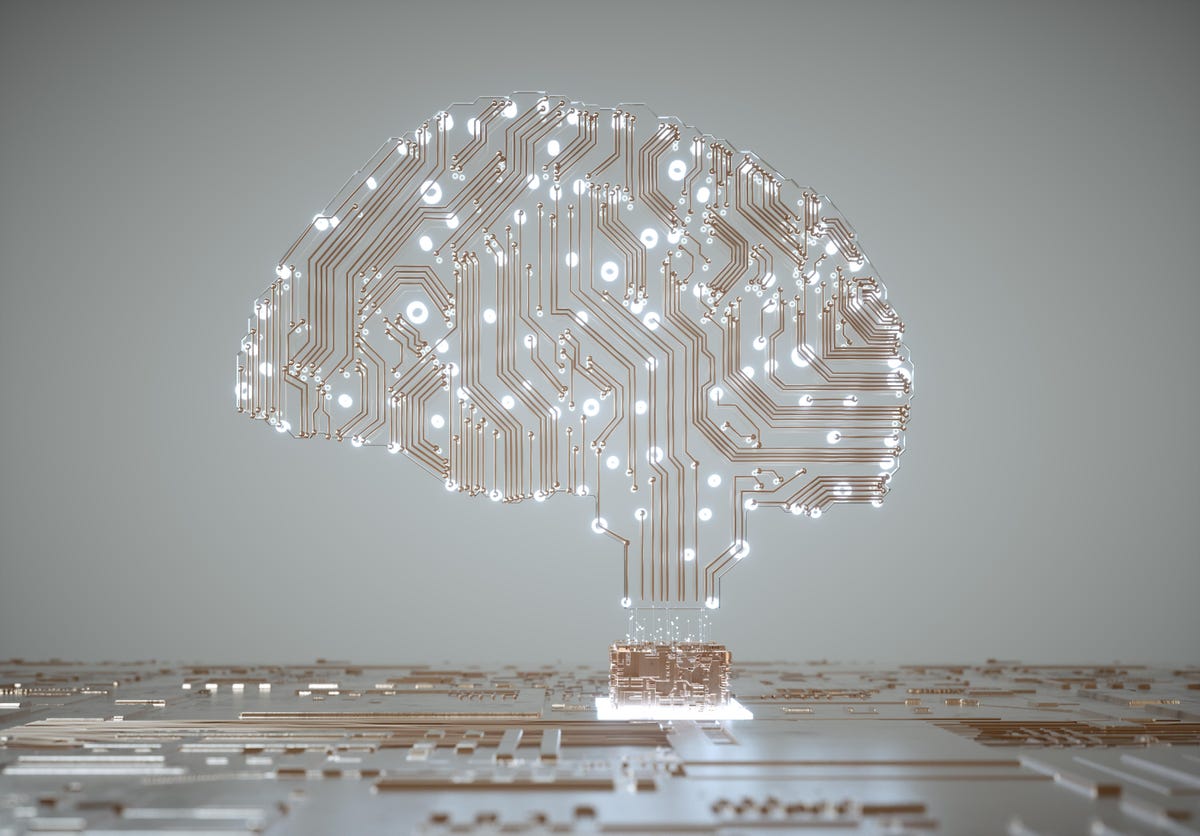Key Takeaways
- The modern smart home is a home fully integrated with tech solutions and the Internet of Things (IoT)
- In the future, we can expect IoT to be replaced with AIoT — the Artificial Intelligence of Things. Through application of AI algorithms, smart homes will be able to sense and understand human behavior, and apply
- In the future, expect to see smart homes that are more energy efficient, that have better integrated technologies and an improved physical infrastructure.
- Another significant feature will be the utilization of data — both by home owners and occupants themselves, and third party companies providing smart home solutions.
Smart homes are not a particularly new concept — the related term ‘smart house’ was first coined in 1984 by the American Association of Home Builders. But the way in which smart homes operate is changing substantially: Currently, most smart homes still work by touch or voice commands of home occupants. However, gradually, this is being replaced by AI algorithms which allow the home to respond and act without human intervention.
In this article we look at this development, and further developments we can expect to see in the way that smart homes operate in the coming years.
A History of Smart Homes
To understand where smart homes might be heading, we need to think about where smart homes come from — the history of smart homes and IoT. Commonly, smart homes are identified with automation, and on that basis, the smart home might be thought to begin with electric appliances that replace manual processes within the home, such as vacuum cleaners are washing machines.
But that seems wrong. By that logic, properties with water-powered mills in the 4th century Roman Empire could be ‘smart homes’. Rather than focusing on automation, a better way to think about smart homes might be in terms of communication. In a smart home applicances and devices can be operated by remote communication, rather than by directly operating the appliance or infrastructure. By this definition, we might trace smart homes back to the first wireless remote control in homes (1955). But this also seems to be lacking. A smart home means not just a single device or appliance, but an entire home arranged around this concept of remote communication.
Thought of in this way, a major step forward comes in 1975 with the establishment of X10: the first commercial product allowing remote control of devices and appliances throughout the home. While X10 works primarily by sending signals along existing power lines, the system also relies on radio frequencies to enable communication between devices and appliances.
By the late 80s, the idea of the ‘smart house’ was close to its modern conception, but without an internet component. It included:
- Homeowners leaving work being able to phone home and electronically instruct the heater, air conditioner or oven to be turned on in advance of arrival.
- Being able to lock all house doors remotely from the bedroom
- Video displays giving house status updates, such as refrigerator doors left open or doors unlocked.
At the turn of the century, the Internet of Things (IoT) arrived: By uniting internet infrastructure, and the furniture and fittings within the home, the modern smart home was finally in place: In 2000, LG released its first smart home refrigerator; in 2014 the release of Amazon Echo cemented the modern identification of smart homes with voice-controlled computer/internet functions.
Next we consider, in what direction should we expect smart homes to go?
The Future of Smart Homes
1. Rise of the Artificial Intelligence of Things (AIoT)
Currently, smart homes are still firmly in the ‘IoT era’; In short, home infrastructure, appliances and devices are connected to the internet, but they still rely on manual instruction to operate: Lights respond to voice commands, and refrigerators have touchscreens. Human direction is at the center of this model and there is little genuine automation.
In various different domains, AI and machine learning means tech is able to learn and respond autonomously. We see this in electric vehicles, which can learn to detect various obstacles and automatically avoid those obstacles without further instruction; we see it in banking and fintech, where programs can learn to detect unusual transactions and automatically flag them for further investigation.
How is AI revolutionizing IoT? Instead of constant manual input, physical devices and infrastructure (enablers), in conjunction with AI algorithms, are able to learn occupant preferences and routines over time. This means:
- Improved security — technology can distinguish pets and robot vacuum cleaners from human motion, and differentiate occupants and family members from intruders
- Health and wellbeing insights — predictive analytics can look at deviating activity patterns for indicators of health problems in need of addressing. As a reactive measure, falls or other accidents might be detected in the same way, and family members of emergency services notified.
- Enhanced comfort — the home can learn lighting and heating preferences, and automatically adjust settings for the occupant’s preferences.
2. Enhanced integration capabilities
Enhanced integration capabilities will be a key component of future smart homes, allowing for a more seamless and intuitive experience. All devices should be able to communicate with one another and share data. Furthermore, the user should be able to interact with the smart home from virtually any ‘node’ (e.g., their smartphone, a tablet, the display on the refrigerator etc).
Standardization and integration have long been themes in IoT: Fundamentally, ‘WiFi’ itself is nothing more than a set of standards about how electromagnetic waves are to carry information within a confined area. The existence of WiFi standards ensures that there isn’t a complete mismatch in the frequencies used for information transfer, and virtually any router can connect to any device: Bluetooth, similarly, is a set of standards about how information will be carried over even shorter distances.
Currently, there are integration ‘gaps’ in IoT. It is not a given that all devices will be able to communicate with each other. This is why devices must advertise ‘works with Amazon Alexa’ or ‘Works with Google Home’ — to ensure that any new device is compatible with the existing smart home ecosystem. While proprietary differences between products may persist, there will be a range of intermediary technologies that will ensure a seamless experience from the user perspective.
A key part of progress here is the new ‘Matter’ standard: This interoperability standard, which all the tech giants are on board with, will allow consumers to mix and match devices and appliances with the ecosystem of their choice. Besides supporting consumer choice, this standard will also enhance competition, as the market for AIoT products grows.
3. Efficient energy and resource use
Smart homes are inherently tooled for energy efficiency, given that they allow for easy alteration of energy consumption and use by the operator. Looking forward, as a result of regulatory pressure, cost savings and consumer choice, expect to see a focus on the way in which smart homes can become more energy efficient. Overall, the move will be away from a ‘linear’ model of energy consumption, where energy is simply wasted where an appliance or device is not being used (think of appliances forever on standby mode), to a ‘circular’ model where energy is only used as absolutely required. Specific changes we should expect to see include:
- Enhanced energy conservation in appliances —through analysis of occupancy and motion, HVAC and other appliances can be powered up and down, automatically.
- Smart meter integration, which will allow energy charges and tariffs to be more carefully tailored to actual energy use in the home, and incentivize occupants to consume energy more carefully.
- Full connectivity between solar PV, other renewable energy sources, batteries, and smart home infrastructure. This will allow individuals to more carefully manage their energy use to move towards a ‘zero net energy’ outcome. In some cases, the increased inefficiency may even allow the smart home to become a ‘net energy generator’, as excess electricity generation is fed back into the network
- Digital sensors to better monitor and manage grey water and biowaste within the home, minimizing the pressure placed on external water and sewerage infrastructure.
4. Improved physical infrastructure
It is not just the tech that is changing in smart homes, but the surrounding physical components of the smart home itself. Some key changes that we could expect to see:
- An increase in the use of sustainable and recycled materials in construction. This is driven both by legislation, as well as consumer choice, as people become more aware of the environmental impact of construction.
- A move away from the traditional ‘grid’ layout of electrical wiring and plumbing, to a more modular and flexible design. This will allow for easier installation and maintenance of smart home systems, as well as future-proofing the home against changes in technology.
- A move towards modular construction, where homes are built from prefabricated modules which can be easily added or removed as required. This will allow homeowners to more easily adapt their homes to changing needs, such as aging in place, or accommodating a growing family.
- The growth of ‘smart tiny homes’. As housing and energy costs continue to soar, and environmental concerns drive consumer choice for more sustainable housing options, expect to see smart home technology designed specifically for the tiny home.
5. The addition of ambient sensing
Smart homes will increasingly monitor, and respond to, the changing environment both inside and outside of the home. This is achieved via ‘ambient sensors’ which continuously monitor surrounding environmental conditions such as temperature, light levels, air quality, humidity and noise levels.
In a technical sense, ambient sensing is not new. Passive Infrared (PIR) sensors, which have been popular since the 1970s, are a form of ambient sensor, as they work by observing changes in the standard lighting environment. What we will see going forward, however, is the further proliferation of these sensors, and sensors which automatically adjust the conditions within the home to optimize comfort, security, safety and energy efficiency: For example, if an ambient sensor detects an increase in carbon monoxide levels, it might automatically open windows and turn on fans to ventilate the area, and send alerts to the smartphones of occupants.
6. Improved data use
One of the key enablers of smart homes is the use of data and analytics to understand how occupants use their homes, and to optimize systems accordingly. Data collected by sensors can be used to understand patterns of occupancy and energy use. As well as generating insights for the benefit of occupants and their family members, this could be used to improve service offerings from third parties: Consumers could receive insurance, appliance or utility offers which are tailored specifically to their activity patterns and energy use within the home.
The use of privacy-first sensing technologies, such as WiFi sensing, will ensure that data insights can be obtained with a minimal level of personal data collection and use.
Expect also to see predictive analytics play a large role in smart homes: This will mean refrigerators and storage areas identifying when supplies run low, and automatically ordering more. It will also mean health applications, where motion and presence sensing within the home picks up deviations from normal movement patterns (perhaps being an early indicator of an illness or condition), and notifies occupants if there is a need to seek medical attention
Conclusion
The future of smart homes lies in a continued evolution of the ‘Artificial Intelligence of Things’ (AIoT), a move towards technology and infrastructure that learns and acts automatically, rather than requiring manual input. In the future, we also expect to see an increased focus on interoperability, energy efficiency, ambient sensors, physical infrastructure and data optimization.
FAQ
Antennae within enabled devices emit Wi-Fi signals or waves at a high rate. These Wi-Fi waves ‘bounce’ or ‘break’ around solid objects. Machine learning algorithms within the Wi-Fi sensing technology learn to distinguish between objects that move (such as humans) and those that don’t (such as walls).
Wi-Fi is normally used to communicate between your devices/computers and the internet. But this is just one application of Wi-Fi. It can also be used to detect motion and presence, including human motion and presence.
Yes. Wi-Fi sensing can be combined with cameras, microphones and other sensing technologies to establish comprehensive sensing technology within the home or building.
Wi-Fi, and hence Wi-Fi sensing, can travel through walls. However, it can be affected by sufficiently solid walls or objects. This impact can be mitigated by using multiple Wi-Fi-enabled devices.


